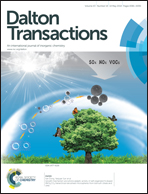p–n junction CuO/BiVO4 heterogeneous nanostructures: synthesis and highly efficient visible-light photocatalytic performance
Abstract
A new strategy via coupling a polyol route with an oxidation process has been developed to successfully synthesize p–n junction CuO/BiVO4 heterogeneous nanostructures. The experimental results reveal that the as-prepared p–n junction CuO/BiVO4 heterogeneous nanostructures exhibit much higher visible-light-driven photocatalytic activity for the degradation of model dye rhodamine B (RhB) than the pure BiVO4 nanocrystals. The photocatalytic degradation rate (C/C0) of the RhB for p–n junction CuO/BiVO4 heterogeneous nanostructures is about two times higher than that of pure BiVO4 nanocrystals. The enhanced photocatalytic efficiency is attributed to a large number of p–n junctions in CuO/BiVO4 heterogeneous nanostructures, which effectively reduces the recombination of electrons and holes by charge transfer from n-type BiVO4 to the attached p-type CuO nanoparticles. This work not only provides an efficient route to enhance the visible-light-driven photocatalytic activity of BiVO4, but also offers a new strategy for fabricating p–n junction heterogeneous nanostructure photocatalysts, which are expected to show considerable potential application in solar-driven wastewater treatment and water splitting.


 Please wait while we load your content...
Please wait while we load your content...